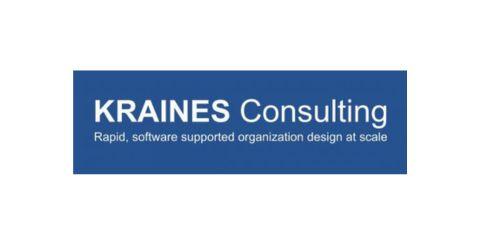Management Productivity Multipliers
Tools for accountability, leadership and Productivity

Obtain this book
Book Review: Management Productivity Multipliers by Gerald A. Kraines, MD
Introduction
In "Management Productivity Multipliers: Tools for Accountability, Leadership, and Productivity," Gerald A. Kraines, MD presents a comprehensive framework for organizational effectiveness based on over five decades of consulting experience. As Senior Vice President at Pariveda Solutions and former CEO of The Levinson Institute, Kraines brings a unique medical and psychological perspective to organizational science. His approach treats organizations as complex human systems that, like the human body, require proper diagnosis of underlying causes rather than symptomatic treatment.
The book's central premise is that exceptional organizational productivity emerges when specific multipliers—fundamental principles of accountability, leadership, organizational structure, and talent management—are systematically integrated. Kraines argues that each multiplier provides incremental value independently, but when applied together, they create exponential results. Organizations implementing these principles, he claims, can achieve productivity gains of 100 to 300 percent.
Main Themes and Key Insights
A Systems Approach to Organizational Health
Kraines opens by establishing his medical approach to organizational diagnosis. Rather than offering trendy management prescriptions that address symptoms, he advocates examining organizations as complex systems where properly aligned structures, processes, and talent create optimal conditions for productivity. This diagnostic approach prioritizes understanding underlying principles before implementing solutions.
The book identifies four essential building blocks for creating highly productive, accountable, and strategically aligned organizations:
- Accountability: Managerial systems must be structured as accountability hierarchies with clear delineation of responsibilities.
- Leadership: Managers must effectively leverage people's potential by engaging commitment, aligning judgment, and developing capabilities.
- Organizational Alignment: Structures and processes must be strategically aligned, ensuring authorities match accountabilities.
- Human Resource Systems: Comprehensive talent systems must accurately assess, deploy, and develop capabilities in relation to role requirements.
Accountability: The Foundation of Managerial Systems
Kraines begins with accountability as the foundational multiplier. He makes the critical distinction between responsibility (a personal internal standard) and accountability (an obligation to others in a role relationship). This distinction helps explain why many organizations struggle with establishing true accountability cultures.
A key principle that recurs throughout the book is that "accountability without authority is fantasy and stress." Employees must have the necessary resources and decision rights to deliver on their commitments. Kraines identifies five prerequisites for establishing a trust-inducing, fair accountability culture:
- Clear communication of expectations
- Feasible assignments given time and resource constraints
- Clarification of context and purpose
- Transparent measurement and assessment criteria
- Appropriate consequences tied to outcomes
In contrast to many organizations that focus only on measuring outputs, Kraines introduces the twin accountability standards of "keeping your word, no surprises" (delivering on commitments or renegotiating them when circumstances change) and "earning your keep" (demonstrating effectiveness in overcoming obstacles and adding value). These standards balance process control with creative initiative.
L.E.A.D.: A Framework for Managerial Leadership
The second major multiplier introduces Kraines' L.E.A.D. framework for managerial leadership:
- Leveraging potential by...
- Engaging commitment
- Aligning judgment
- Developing capabilities
Kraines emphasizes that effective leadership requires balancing two distinct relationships between managers and subordinates: the role relationship (based on accountability) and the human relationship (based on mutual commitment). The role relationship must take precedence, but both are necessary for an organization to thrive.
The book provides practical guidance on specific leadership practices:
- Engaging commitment involves creating a healthy psychological contract where employees commit to organizational success in proportion to how well the organization commits to their success. This requires attending to personal safety and security, providing personal value, demonstrating value-adding leadership, and establishing a values-based culture.
- Aligning judgment centers on context-setting, which Kraines calls "the bread and butter of effective accountability leadership." Through upward context, managers explain the rationale behind assignments, enabling employees to make decisions that support higher-level objectives. Through teamworking context, managers clarify how team members' work interrelates.
- Developing capabilities means continuously improving employees' effectiveness through coaching and feedback.
Work, Complexity, and Levels
The book's third key multiplier introduces the concept of organizational levels based on the complexity of work. Drawing on Elliott Jaques' research, Kraines explains that work complexity can be measured by timespan—the length of time targeted for completion of a role's longest assignment.
This concept leads to a profound insight: there are naturally occurring, discrete levels of complexity in all organizations. Roles at each level require different thinking patterns. A Level 1 role might require applying known procedures (timespan of one day to three months), while a Level 8 role involves transforming multiple industries over several generations (timespan beyond 50 years).
For managers to add value through context-setting, their roles must be precisely one level above their subordinates' roles. Too many levels create bureaucracy and delay; too few create disconnects between managers and subordinates. This scientific approach to organizational design challenges common restructuring approaches that create arbitrary layers.
Capabilities, Potential, and Effectiveness
Building on the concept of work complexity, Kraines presents a sophisticated model of human capability matching. The book identifies five core capabilities necessary for role effectiveness:
- Current potential: Innate cognitive ability to handle complexity
- Skilled knowledge and experience: Role-specific expertise
- Innate talents and aptitudes: Natural inclinations for certain types of work
- Commitment and value alignment: Motivation to apply oneself fully
- Maturity: Absence of disruptive behaviors
Kraines distinguishes between potential (what someone could do under ideal circumstances) and effectiveness (what someone is actually doing). Current potential is most critical when filling roles, while effectiveness is what organizations should pay for.
A particularly valuable insight is that potential matures predictably throughout adulthood, similar to how children grow physically according to predictable patterns. This enables accurate projection of an employee's future potential, allowing for sophisticated succession planning.
Principles of Organization Design and Team Accountability
Kraines integrates previous concepts to establish principles for optimal organizational design. The key multipliers—levels of complexity, functional alignment, cross-functional processes, and system stewardship—must be considered together to create structures that balance capability, efficiency, and accountability.
The book challenges common beliefs about team accountability, arguing that in managerial systems, "team accountability" is a fiction 99% of the time. Only the manager has the necessary authorities to be held accountable for team outcomes. This insight leads to clear distinctions between different types of teams:
- Manager-subordinate teams: The manager is fully accountable for team outputs
- Cross-functional process improvement teams: Study-recommendation teams and implementation-coordination teams
- Project teams: Coordinated by team leaders with specific authorities delegated by the crossover-point manager
Functions, Processes, and System Stewardship
Kraines provides detailed frameworks for three additional multipliers:
- Functions and Functional Alignment: A strategic business unit requires specific mainstream business functions (market development, product-service development, provisioning, and sales), resourcing functions, and control functions. The book provides architectural principles for structuring these functions at appropriate levels of complexity.
- Accountable Cross-Functional Processes: Processes must be structured to ensure "who is accountable for what in relationship to whom" is always clear. Kraines introduces a taxonomy of direct and indirect accountabilities (informing, persuading, instructing) that avoids the problems of matrix management while ensuring process control.
- System Stewardship: Instead of creating matrix relationships with multiple bosses, organizations should establish system stewardship roles. These roles support process-accountable managers through continuous improvement, service provision, indirect influencing, and direct oversight—without undermining the accountability hierarchy.
Human Resource Systems and Implementation
The final sections present Kraines' approach to human resource systems and implementation. He describes HR systems as a double-strand helix where roles (one strand) and employees with matching capabilities (the other strand) interconnect.
A particularly valuable aspect is Kraines' methodology for assessing employee effectiveness in role. His model evaluates:
- How well employees master basic role requirements (holding the role up)
- The incremental value they add through extraordinary initiative (pulling the role up)
- How disruptive behaviors might diminish their contribution (pulling the role down)
The book provides a detailed implementation approach for Strategic Organization transformation, from analyzing current state to designing optimal structures, filling roles, and establishing accountability systems. Kraines emphasizes the importance of leadership during change, identifying five types of communication necessary for successful transformation.
Beyond Business: Healthcare Systems and Sustainability
In the final chapters, Kraines applies his principles to healthcare organizations and sustainability. He acknowledges that healthcare systems are hybrid organizations where the clinical autonomy of physicians requires a different leadership approach than traditional managerial systems.
The book concludes with a thought-provoking discussion between Kraines and Pariveda Solutions executives about sustainability and purpose. This conversation explores how organizations designed to help people realize their full potential are more likely to endure for generations or even centuries.
Analysis and Relevance
What distinguishes "Management Productivity Multipliers" is its integration of scientific rigor with practical application. Unlike many management books that offer anecdotal evidence or opinion, Kraines presents a coherent system based on decades of research and application.
The book's primary strength is its comprehensive nature. Rather than focusing on isolated aspects of organizational effectiveness, Kraines examines how leadership, structure, process, and talent systems must work together. This holistic approach recognizes that dysfunctions in one area inevitably affect others.
For executives and consultants, several aspects of the book are particularly valuable:
- The scientific approach to organizational levels offers a precise method for determining how many layers an organization should have—arguably one of the most persistent challenges in restructuring efforts.
- The accountability framework balances control with creativity, addressing the pendulum swing between bureaucracy and anarchy that plagues many organizations.
- The detailed taxonomy of team types and accountabilities provides clarity for structuring matrix-free cross-functional work.
- The approach to talent assessment and succession planning based on predictable potential maturation enables truly strategic workforce planning.
However, implementing these principles requires significant commitment. As Kraines acknowledges, "there is no easy solution for establishing a value-creating, trust-inducing, and fair culture of accountability." Organizations must be willing to invest in understanding and systematically applying these principles.
The book also challenges many common practices. Its rejection of matrix management, team accountability, and personality-based selection will meet resistance in organizations where these approaches are entrenched. Yet Kraines' careful deconstruction of why these practices fail is compelling.
Conclusion
"Management Productivity Multipliers" stands out for its integration of psychological insight, organizational science, and practical application. Its most valuable contribution is demonstrating how seemingly separate aspects of organizational effectiveness—leadership, structure, process, and talent systems—form an integrated whole.
For executives frustrated with simplistic management trends or consultants seeking evidence-based approaches to organization design, this book offers a robust framework grounded in decades of research and application. While implementing these principles requires significant commitment, Kraines makes a convincing case that the productivity gains justify the investment.
The book's medical approach—diagnosing root causes rather than treating symptoms—provides a refreshing alternative to management fads. By viewing organizations as complex human systems with discoverable principles of optimal functioning, Kraines offers a path to sustainable organizational health and productivity.
For leaders committed to building organizations where people can realize their full potential while delivering exceptional results, "Management Productivity Multipliers" provides both the conceptual framework and practical tools to achieve that vision.





